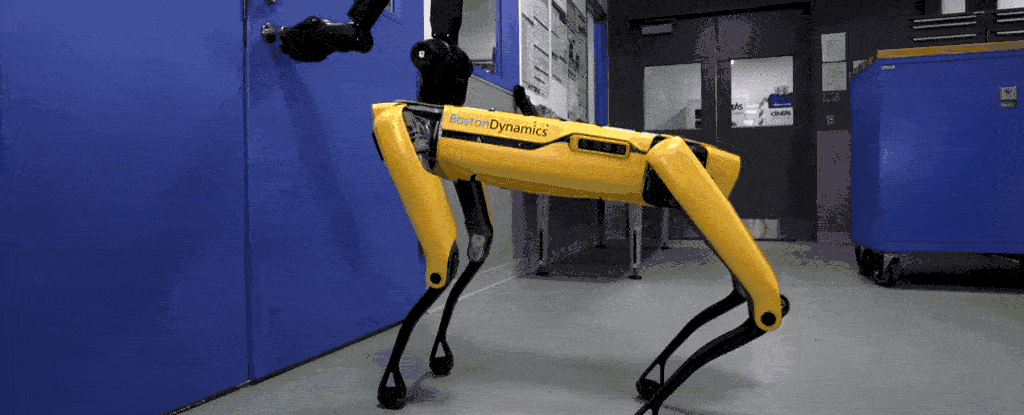Machine learning, artificial intelligence (A.I.) and deep learning
Artificial intelligence, machine learning and deep learning. They are often mentioned in the same breath. Yet they are far from similar. What is the difference between these three technological developments?
The difference between artificial intelligence, machine learning and deep learning:
- Artificial intelligence or AI is functional intelligence outside the human brain. We distinguish between strong and limited AI. The strong or broad variant focuses on developing software that can reason and solve problems independently.
- Machine learning is concerned with developing software that improves its own performance. Machine learning leans heavily on statistical science.
- Deep learning is a subset of machine learning, based on multilayer neural networks. There are numerous examples of deep learning where the technology effortlessly beats the human brain.

Deep learning
Deep learning is also called structured or hierarchical learning. Deep learning is part of a wider variety of machine learning methods. This technology can take place in three ways:
- Controlled: in this case, the algorithm is given an input and an example of an output. The algorithm learns based on the example.
- Uncontrolled: in this case, the algorithm is not given an example of an output.
- Semi-controlled: this variant is halfway between controlled and uncontrolled deep learning.
Deep learning is successfully used in areas such as image recognition (faceID or medical scan assessment), speech recognition (Alexa, Siri, et cetera) and translation (Google Translate). Merging various deep learning applications can create even more powerful applications. Examples include the self-driving car and real-time speech translation where you can talk to a Chinese person in Dutch and he or she effortlessly understands you.
Machine learning
Machine learning, or machine learning, is quite a broad field of research within artificial intelligence and software development. In software development, machine learning refers to the development of algorithms and companion software that allow computers to learn. This software gets better at its task the more often it performs it. The developing performance of machine learning software is expressed by the following formula.
T = Task
X = Number of exercises
P = Performance
T x X = P
Machine learning leans heavily on statistical (data) analysis and focuses on algorithmic complexity in programmes. Also, machine learning is strongly related to data mining, which involves an automated search for relationships or occurring patterns in a large amount of data.

Machine learning can be roughly divided into three categories:
Supervised machine learning
Supervised learning uses data labelled by humans. Supervised data is mainly used to predict events. Supervised learning is best chosen when the desired output of an algorithm is known. In supervised learning, an algorithm learns a series of inputs together with a series of inputs in combination with the corresponding (desired) outputs and the comparison with unwanted outputs. Based on the discrepancy between them, the model adapts.
An example of supervised learning is Apple’s Photos on iOS and Mac OS X. If the user tags a few friends in a number of photos, the software is able to recognise and independently tag these people in photos from now on.
Classification
A subcategory of supervised machine learning is classification. Classification is best defined as the attempts to predict an output when the input is known. To do this, the model needs a labelled example in the form of text, speech or an image.
Unsupervised machine learning
For data that is not labelled, unsupervised learning lends itself best. In this variant, the software attempts to discover new patterns in the data without knowing the type of data or labels in any form. This form of machine learning works well for clustering, for example, where data is organised based on similar characteristics.
Reinforcement machine learning
This way of machine learning is strongly based on a theory from psychology. Reinforcement behaviour is nothing but learning by trial and error. This is what a computer is eminently capable of doing. In the case of reinforcement learning, a computer investigates the ideal outcome by simulating it frequently. This form of machine learning is widely used in navigation applications or gaming.
Practical example of machine learning:
SimpledCard: machine learning saves time and prevents fraud
SimpledCard is an innovative fintech application that allows internationally accepted payment cards to be issued without the intervention of a bank. Receipts are linked directly to transactions via a mobile app.
For SimpledCard, we applied machine learning in the following areas:
Transaction monitoring
The application monitors all transactions and learns to recognise fraudulent transactions itself. This saves the time that was required to manually check transactions and receipts.
Voice recognition
Various actions in the app can be voice-controlled, such as an instruction to replenish the balance on the card by a certain amount.
Recognising receipts
The application itself recognises receipts and automatically fills in the necessary information for accountability, such as the description and amount.
Artificial intelligence
When we talk about artificial intelligence or AI, we mean a created (and therefore artificial) phenomenon that exhibits intelligence to a greater or lesser extent.
Wikipedia (what else) defines intelligence as follows:
‘Intelligence is a general concept from psychology that describes a mental attribute with many different functions; such as the ability to notice similarities and differences in perceptions, orientate oneself in space, reason, make plans, fathom and solve problems, think in abstractions, understand and produce ideas and language, store information in memory and retrieve from it, learn from experiences.’ – Wikipedia
The fact that Wikipedia refers to a mental attribute implies that intelligence would be purely reserved for living beings. Artificial intelligence is therefore about an inanimate object, such as a computer, possessing the ability described above.
We distinguish two forms of AI: limited and strong artificial intelligence.

Limited artificial intelligence
Limited artificial intelligence is limited to small areas in which certain behaviour appears intelligent. It could therefore also be called specialised intelligence. It appears intelligent, but only in a specific area. This could include the algorithms deployed by Google to facilitate internet searches, but also visual inspection or certain expert systems. At the time of writing, limited AI is the holy grail of software development.
Strong artificial intelligence
Strong artificial intelligence is about software that can solve problems on its own. Theoretically, it is possible for such a system to develop its own consciousness. In that case, software thus acquires its own identity.
Such a consciousness can manifest itself in two ways. The first possibility is that the software’s intelligence is based on that of humans. In this case, the computer thinks and expresses itself as a human being. The second possibility is that the software develops in a non-human way. It is difficult to describe what such a construct would look like. Fictional examples are familiar from films such as iRobot, The Terminator and The Matrix.
As you probably suspect: right now, it is impossible to build strong AI. Wait-but-Why is a nice blog that elaborates on this.
Summary
Deep learning is a discipline of machine learning, in which layered neural networks learn from large amounts of data. By machine learning, we refer to algorithms whose performance improves the more often they are exposed to data. Artificial intelligence is a (software) construct that can independently perceive, reason and react.
Ready for next level product development?
Let's create a digital product that end users and business stakeholders will love and that is also future-proof, scalable, secure and easy to maintain.

 7 min
7 min 



